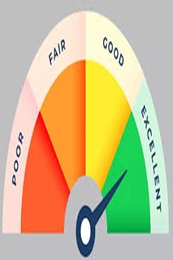How to Choose a Recurring Deposit Tenure that Matches Your Financial Goals
April 15, 2025

Choosing the right Recurring Deposit (RD) tenure is important for achieving your financial goals. Whether saving for a short-term purchase or planning for long-term financial security, understanding how to align your RD tenure with your objectives is key to successful investment planning. This guide will help you navigate the process of selecting the ideal savings duration for your recurring deposits.
Understanding Recurring Deposits
Before choosing RD tenure, let's briefly review a recurring deposit. An RD is a type of deposit account where you deposit a fixed amount regularly (usually monthly) for a predetermined period. At the end of this period, you receive the total amount invested plus the interest earned. RD tenure ranges from 6 months to 10 years. The interest is compounded and paid out on a quarterly basis.
Example: A family in India wants to save for their child's future education. They open a recurring deposit (RD) account with a monthly contribution of ₹5,000 for a 10-year tenure. At the end of the 10 years, they receive the total amount invested (₹5,000 x 12 months x 10 years = ₹600,000) plus the accumulated interest, which can be used to fund their child's college education.
Disclaimer: The above example is for illustration purpose only. Ujjivan SFB does not take any responsibility for the accuracy of the information. Please use a Savings Account Calculator and Recurring Deposit Calculator or consult with a financial expert for better understanding.
Factors to Consider When Choosing RD Tenure
Financial Goals
The primary factor in choosing RD tenure should be your financial goals. Are you saving for a short-term goal like a vacation or a long-term goal like retirement? Your goals will significantly influence the duration of your RD.
Time Horizon
Closely related to your goals is your time horizon. Short-term goals typically require RDs with shorter tenures (6 months to 2 years), while long-term goals may benefit from longer tenures (3-10 years).
Interest Rates
Generally, longer RD tenures offer higher interest rates. However, this shouldn't be the sole factor in your decision. Balance the potential for higher returns with your liquidity needs and financial goals.
Liquidity Needs
Consider how soon you might need access to your funds. Shorter RD tenures provide more liquidity but may offer lower returns. Assess your cash flow and emergency fund situation when choosing RD tenure.
Risk Tolerance
While RDs are generally low-risk investments, longer tenures do carry some interest rate risk. If interest rates rise significantly during your RD term, you might miss out on higher returns.
Matching RD Tenure to Different Financial Goals
Short-Term Goals (1-3 years)
For goals like saving for a vacation, home appliances, or building an emergency fund, consider RD tenures of 6 months to 3 years. This tenure provides a balance between growth and accessibility.
Medium-Term Goals (3-7 years)
Goals such as saving for a down payment on a house or funding your child's education in a few years might benefit from RD tenures of 3 to 7 years. This duration allows for more substantial growth while still providing a clear timeline.
Long-Term Goals (7 - 10 years)
For long-term financial goals like retirement planning or creating a significant wealth corpus, consider RD tenures of 7 years or more. These longer durations typically offer higher interest rates and allow your savings to compound over time.
Strategies for Effective Investment Planning with RDs
Ladder Strategy
Instead of putting all your savings into one long-term RD, consider creating a ladder of RDs with different tenures. This strategy provides periodic liquidity while benefiting from higher interest rates on longer-term deposits.
Use a Recurring Deposit Calculator
A recurring deposit calculator is a type of financial calculator that gives you an estimate of your recurring deposit returns. You can adjust the tenure of RD with the help of the calculator and check which tenure is best aligned with your financial goals and aspirations.
Goal-Based RDs
Open separate RDs for each of your financial goals. This approach helps you track progress towards individual objectives.
Combine with Other Investments
While choosing RD tenure, consider how it fits into your overall investment planning. RDs can provide a stable, low-risk component to complement your portfolio's potentially higher-risk investments.
Regular Review
Periodically review your RD strategy. As your financial goals evolve or circumstances change, you may need to open new RDs.
Final Thoughts
Choosing the right RD tenure is crucial in aligning your savings strategy with your financial goals. By considering your objectives, time horizon, liquidity needs, and overall investment planning, you can make informed decisions about the ideal tenure for your recurring deposits.
Remember, there's no one-size-fits-all approach to choosing RD tenure. Your decision should be based on your unique financial situation and aspirations.
Start small, dream big! Invest in Ujjivan Small Finance Bank’s Recurring Deposit and enjoy higher interest rates! Save for your long- and short-term goals with our RD and live a stress-free financial life. Start investing with just ₹100!
FAQs
1. What is the minimum tenure for a Recurring Deposit?
Most banks offer RDs with minimum tenures of 6 months. However, some may have options for shorter durations, like 3 months.
2. Can I change my RD tenure after opening the account?
Generally, RD tenures cannot be changed after opening. It's crucial to choose your tenure carefully at the start.
3. How does RD tenure affect interest rates?
Typically, longer RD tenures offer higher interest rates. However, rates can vary between financial institutions, so compare options.
4. Is it better to choose a longer RD tenure for higher returns?
Longer tenures often provide higher returns, but consider your liquidity needs and financial goals when making this decision.
5. Can I have multiple RDs with different tenures?
You can open multiple RDs with varying tenures to meet different financial goals and maintain liquidity.
6. What happens if I need to withdraw money before the RD tenure ends?
Premature withdrawal usually results in a penalty and reduced interest. Check your bank's specific policies before withdrawing early.
7. How should I choose RD tenure for short-term goals?
For short-term goals, consider RD tenures of 6 months to 3 years to balance growth and accessibility.
8. Is it possible to extend my RD tenure after maturity?
Some banks allow you to renew or extend your RD after maturity. Check with your bank for specific options.
9. How does inflation affect my choice of RD tenure?
Consider choosing a tenure and interest rate that outpaces inflation to ensure real savings growth.
10. Can I use RDs with different tenures as part of my investment diversification strategy?
Yes, using RDs with various tenures can effectively diversify your investments and manage risk.
Latest Blogs

Telangana Housing Board & KPHB Colony: A Guide to Affordable Urban Housing in Hyderabad
March 14, 2025
As Telangana continues its rapid urbanisation journey, two key housing entities—Telangana Housing Board (THB) and Kukatpally Housing Board Colony (KPHB)—have played critical roles in shaping the state's real estate ecosystem.

Does Checking CIBIL Score Frequently Lower Your Credit Points?
April 07, 2025
Imagine you're planning to apply for a home loan, a credit card, or even a car loan. Naturally, you want to ensure your CIBIL score is in good shape before proceeding.

Explained: Can NRIs Buy an Agricultural Land in India?
April 03, 2025
Real estate investment is often a top priority for Non-Resident Indians (NRIs) looking to retain strong financial ties to India.

How to Improve Your CIBIL Score from 600 to 750: A Step-by-Step Guide
April 02, 2025
Your CIBIL score is like your financial reputation—banks check it before approving loans or credit cards. If your score is hovering around 600, you might face difficulties in securing credit or may get loans with higher interest rates.

What Happens When You Leave Your Savings Account Unused?
April 01, 2025
Imagine waking up one day to find that your hard-earned money is locked away and inaccessible. Sounds stressful, right? This is precisely what happens when you leave your Savings Account inactive for too long.





